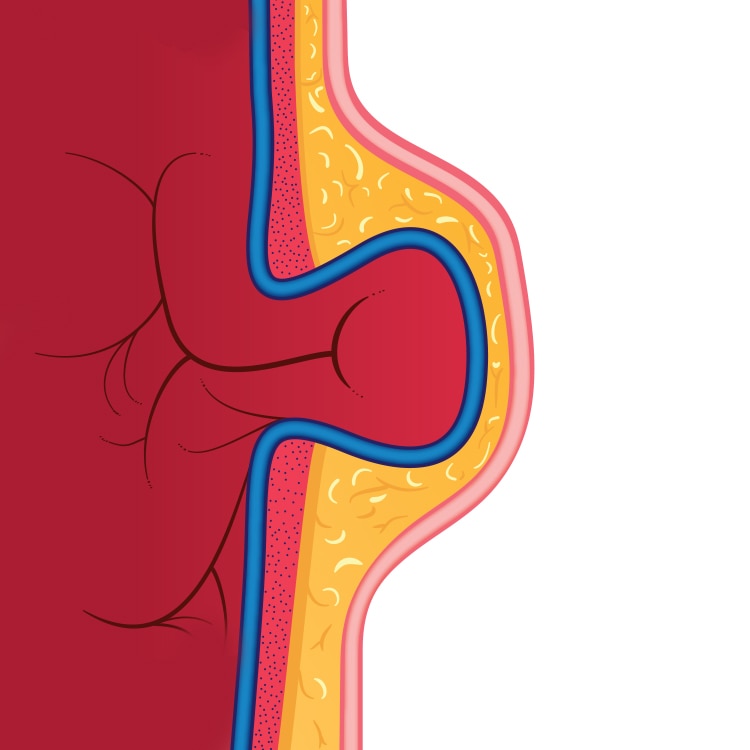Medtronic provides this listing as a service. We have no vested interest in any specific physicians, nor do we provide any recommendation, assurance, or guarantee with respect to their service. This listing may not be a complete list of all physicians who provide this service. Information on this site should not be used as a substitute for talking with your doctor. Always talk with your doctor about diagnosis and treatment information
about the condition
Inguinal
Hernia
Don't put off treatment for a hernia - speak to a surgeon today about your treatment options.
If you have an inguinal or groin hernia,
you are not alone.
Hernia surgery explained
Learn more about hernia and the treatment options.
Always discuss treatment options with a doctor.
Inguinal hernias are the most common kind of hernia and account for two thirds of hernias overall.1 The majority of these hernias are found in males - which accounts for its reputation as a male condition. Men are 25 times more likely to have a groin hernia than women.1 Only a small percentage of people with hernias have them repaired, this may be because they don't know what their treatment options are.
A sudden pain in the groin or the sensation that something has torn can indicate a hernia. A hernia is a weakness or tear in the abdominal muscle wall, which normally holds the inner lining of the abdomen and internal organs in place (inside, where they belong). The weakness or tear allows the inner lining to protrude and form a pouch. The visible bulge is usually a loop of intestine protruding through the tear in the muscle and into that pouch.

What are the treatment options for a hernia repair?

What is the recovery process after hernia repair?

Find a hernia specialist and make an appointment.
Anatomy of a hernia
The anatomy of a hernia can be compared to a bulge in the inner tube of a tyre. When the tyre is damaged, the inner tube pushed and bulges through the opening of the tyre.
Similarly, when a hernia occurs, the inner layer of the abdominal wall may push through the abdominal defect.

Why men?
The area where inguinal hernias occur is the opening through which the testicles descend during foetal development. It usually closes up before birth except for a small space allowing the spermatic cord to pass to the scrotum. If it doesn't close properly, it can leave a natural weakness that can bulge or tear later on.

Indicators of a hernia
A soft bulge in the groin area or scrotum thay you can push back in with gentle pressure or that gets smaller or disappears when you lie down can indicate a hernia. A sudden, sharp pain in the groin area or a sensation that something has 'torn' can also, sometimes, indicate a hernia. Any potential indicators of hernia should be discussed with a doctor.

What's next....
The more you know about surgical repair techniques, the better prepared you will be to have an informed discussion - and make an informed decision - with your doctor.

Symptoms of a hernia
A hernia won't fix itself and may get bigger and worsen over time. Some hernias have no symptoms and are found during a routine physical. Most inguinal hernias will have one or more of the following signs or symptoms:
- A dull ache
- A feeling of weakness, heaviness, pressure, or tingling
- A burning sensation in the abdomen, groin, or scrotum
Call 000 or go to the emergency department of a hospital if:
- A hernia becomes obstructed (stuck) and strangulated (loses blood supply)
- The hernia bulge no longer goes back inside the body when lying down or with gentle pressure
- There is a fever, chills, nausea, vomiting, or bloody stools
- No ability to have a bowel movement or pass gas
- The bulge turns red, purple, or dark
- There is increased pain in the abdomen or genital region

References
- Malangoni MA, Rosen MJ. Hernias. In:CM Townsend, RD Beauchamp, et al. Sabiston Textbook of Surgery, Philadelphia, PA: Elsevier, 2012:Chap 46.